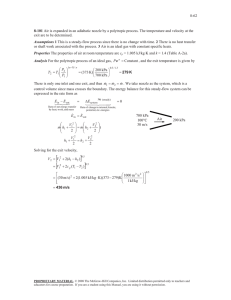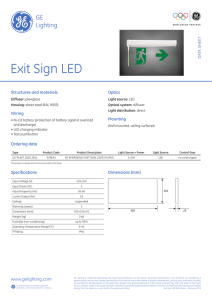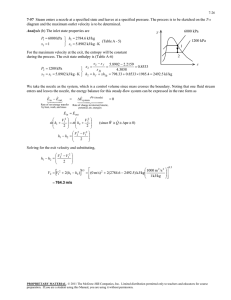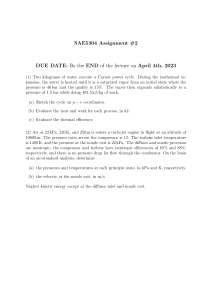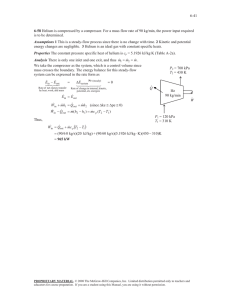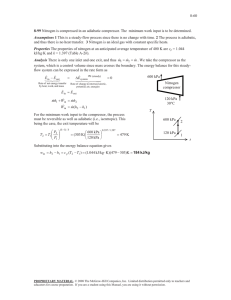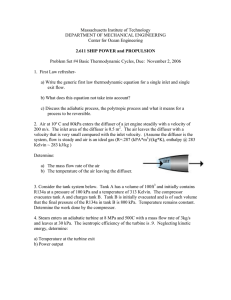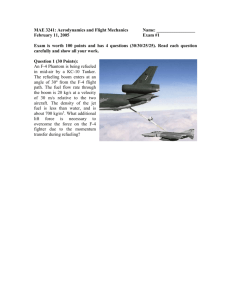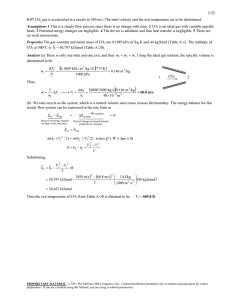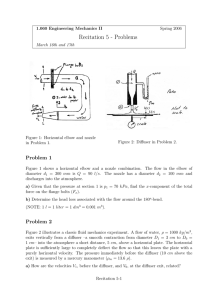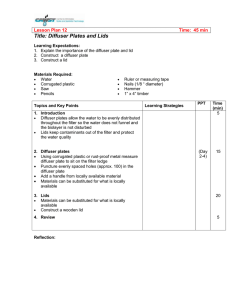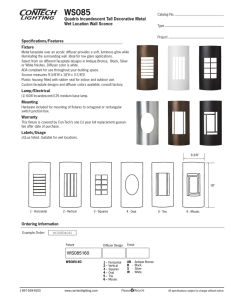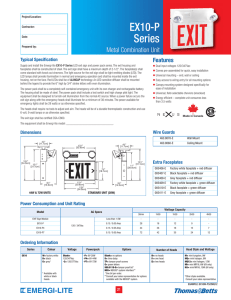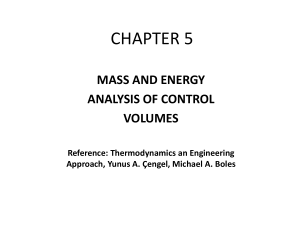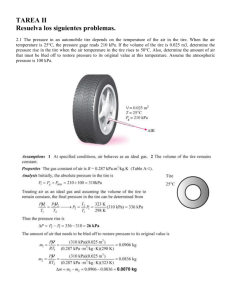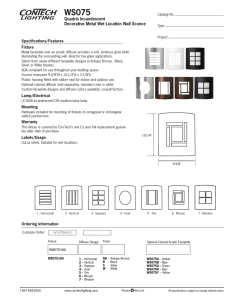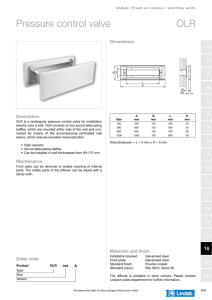6-20 constant specific heats. diffuser is adiabatic.
advertisement
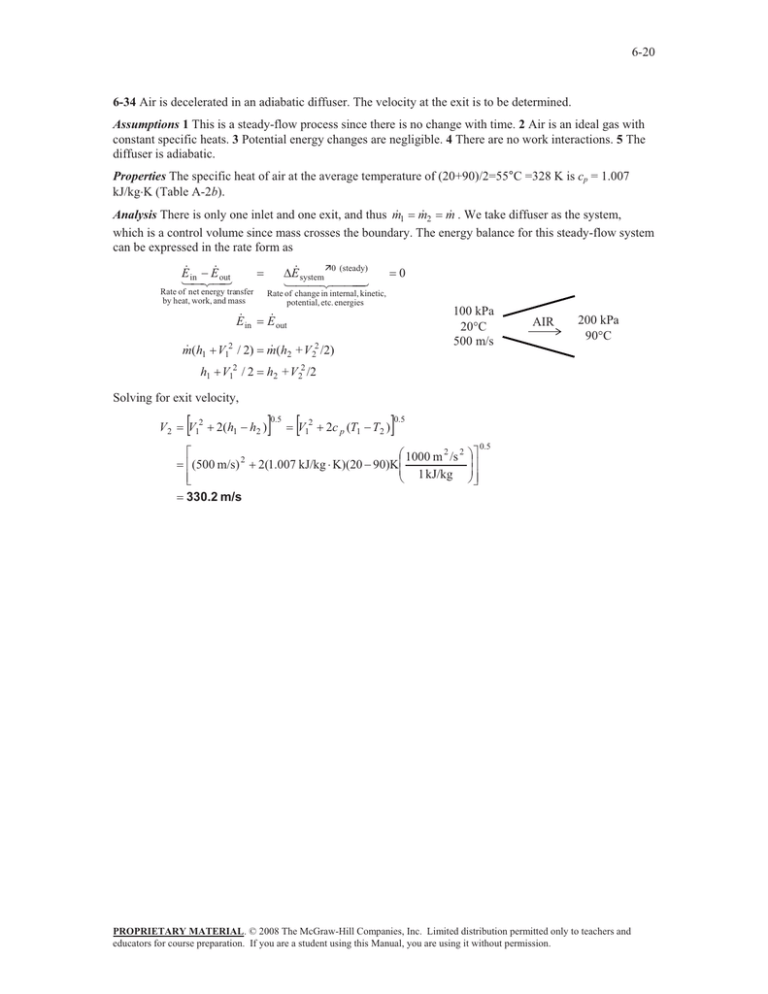
6-20 6-34 Air is decelerated in an adiabatic diffuser. The velocity at the exit is to be determined. Assumptions 1 This is a steady-flow process since there is no change with time. 2 Air is an ideal gas with constant specific heats. 3 Potential energy changes are negligible. 4 There are no work interactions. 5 The diffuser is adiabatic. Properties The specific heat of air at the average temperature of (20+90)/2=55°C =328 K is cp = 1.007 kJ/kgK (Table A-2b). Analysis There is only one inlet and one exit, and thus m 1 m 2 m . We take diffuser as the system, which is a control volume since mass crosses the boundary. The energy balance for this steady-flow system can be expressed in the rate form as E E in out Rate of net energy transfer by heat, work, and mass 'E system Ê0 (steady) Rate of change in internal, kinetic, potential, etc. energies E in m (h1 V12 / 2) h1 V12 / 2 0 100 kPa 20qC 500 m/s E out m (h2 + V 22 /2) AIR 200 kPa 90qC h2 + V 22 /2 Solving for exit velocity, V2 >V 2 1 2(h1 h2 ) @ 0.5 >V 2 1 2c p (T1 T2 ) @ 0.5 ª § 1000 m 2 /s 2 «(500 m/s) 2 2(1.007 kJ/kg K)(20 90)K¨¨ «¬ © 1 kJ/kg 330.2 m/s ·º ¸» ¸» ¹¼ 0.5 PROPRIETARY MATERIAL. © 2008 The McGraw-Hill Companies, Inc. Limited distribution permitted only to teachers and educators for course preparation. If you are a student using this Manual, you are using it without permission.
